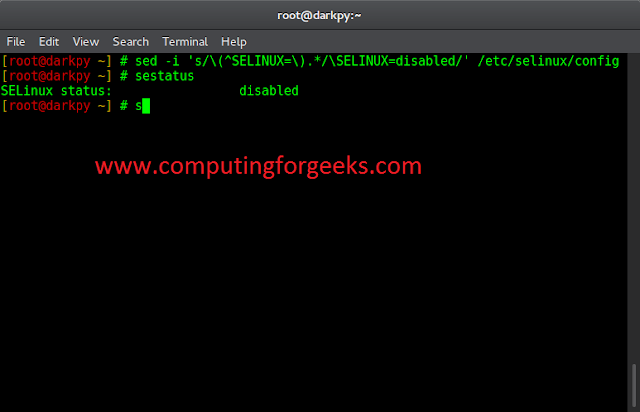H2 is an embedded, open-source, and in-memory database. It is a relational database management system written in Java. It is a client/server application. It stores data in memory, not persist the data on disk. Here we will be discussing how can we configure and perform some basic operations in Spring Boot using H2 Database.
Some of the main features of the H2 Database are:
- Very fast, open-source, JDBC API
- Embedded and server modes; disk-based or in-memory databases
- Transaction support, multi-version concurrency
- Browser-based Console application
- Encrypted databases
- Fulltext search
- Pure Java with a small footprint: around 2.5 MB jar file size
- ODBC driver
Configure H2 Database in Spring Boot Application
Step 1: Adding the dependency
To use the H2 database in the spring boot application we have to add the following dependency in the pom.xml file:
dependency>
<groupId>com.h2database</groupId>
<artifactId>h2</artifactId>
<scope>runtime</scope>
</dependency>
Step 2: Write some properties in the application.properties file
# H2 Database spring.h2.console.enabled=true spring.datasource.url=jdbc:h2:mem:dcbapp spring.datasource.driverClassName=org.h2.Driver spring.datasource.username=sa spring.datasource.password=password spring.jpa.database-platform=org.hibernate.dialect.H2Dialect
Let’s understand what are these properties are by opening the H2 Database console.
H2 Console: By default, the console view of the H2 database is disabled. Before accessing the H2 database, we must enable it by using the following property.
spring.h2.console.enabled=true
Once we have enabled the H2 console, now we can access the H2 console in the browser by invoking the URL http://localhost:8082/h2-console.
Note: Provide your port number in which your spring application is running
The following figure shows the console view of the H2 database.
Example:
We are going to perform some basic CRUD Operations by creating a Spring Boot Application and using the H2 Database.
Step 1: Refer to this article How to Create a Spring Boot Project with IntelliJ IDEA and create a Spring Boot project.
Step 2: Add the following dependency
- Spring Web
- H2 Database
- Lombok
- Spring Data JPA
Below is the complete code for the pom.xml file. Please check if you have missed something.
XML
<?xml version="1.0" encoding="UTF-8"?><project xmlns="http://maven.apache.org/POM/4.0.0" xmlns:xsi="http://www.w3.org/2001/XMLSchema-instance" xsi:schemaLocation="http://maven.apache.org/POM/4.0.0 https://maven.apache.org/xsd/maven-4.0.0.xsd"> <modelVersion>4.0.0</modelVersion> <parent> <groupId>org.springframework.boot</groupId> <artifactId>spring-boot-starter-parent</artifactId> <version>2.5.5</version> <relativePath/> <!-- lookup parent from repository --> </parent> <groupId>com.amiya</groupId> <artifactId>Spring-Boot-Demo-Project</artifactId> <version>1.0.0-SNAPSHOT</version> <name>Spring-Boot-Demo-Project</name> <description>Demo project for Spring Boot</description> <properties> <java.version>11</java.version> </properties> <dependencies> <dependency> <groupId>org.springframework.boot</groupId> <artifactId>spring-boot-starter-web</artifactId> </dependency> <dependency> <groupId>com.h2database</groupId> <artifactId>h2</artifactId> <scope>runtime</scope> </dependency> <dependency> <groupId>org.springframework.boot</groupId> <artifactId>spring-boot-devtools</artifactId> <scope>runtime</scope> <optional>true</optional> </dependency> <dependency> <groupId>org.springframework.boot</groupId> <artifactId>spring-boot-starter-data-jpa</artifactId> </dependency> <dependency> <groupId>org.springframework.boot</groupId> <artifactId>spring-boot-starter-test</artifactId> <scope>test</scope> </dependency> <dependency> <groupId>org.projectlombok</groupId> <artifactId>lombok</artifactId> <optional>true</optional> </dependency> </dependencies> <build> <plugins> <plugin> <groupId>org.springframework.boot</groupId> <artifactId>spring-boot-maven-plugin</artifactId> <configuration> <excludes> <exclude> <groupId>org.projectlombok</groupId> <artifactId>lombok</artifactId> </exclude> </excludes> </configuration> </plugin> </plugins> </build></project> |
Step 3: Create 4 packages and later create some classes and interfaces inside these packages as seen in the below image
- entity
- repository
- service
- controller
Note:
- Green Rounded Icon ‘I’ Buttons are Interface
- Blue Rounded Icon ‘C’ Buttons are Classes
Step 4: Inside the entity package
Create a simple POJO class inside the Department.java file.
Example:
Java
// Java Program to Demonstrate Department File// Importing required package modulespackage com.amiya.springbootdemoproject.entity;// Importing required classesimport javax.persistence.Entity;import javax.persistence.GeneratedValue;import javax.persistence.GenerationType;import javax.persistence.Id;import lombok.AllArgsConstructor;import lombok.Builder;import lombok.Data;import lombok.NoArgsConstructor;@Entity@Data@NoArgsConstructor@AllArgsConstructor@Builder// Classpublic class Department { @Id @GeneratedValue(strategy = GenerationType.AUTO) private Long departmentId; private String departmentName; private String departmentAddress; private String departmentCode;} |
Step 5: Inside the repository package
Create a simple interface and name the interface as DepartmentRepository. This interface is going to extend the CrudRepository as we have discussed above.
Example Below is the code for the DepartmentRepository.java file
Java
package com.amiya.springbootdemoproject.repository;import com.amiya.springbootdemoproject.entity.Department;import org.springframework.data.repository.CrudRepository;import org.springframework.stereotype.Repository;// Annotation@Repository// Interface extending CrudRepositorypublic interface DepartmentRepository extends CrudRepository<Department, Long> {} |
Step 6: Inside the service package
Inside the package create one interface named as DepartmentService and one class named as DepartmentServiceImpl.
Example 1-A
Java
// Java Program to Demonstrate DepartmentService File// Importing required package modulespackage com.amiya.springbootdemoproject.service;import com.amiya.springbootdemoproject.entity.Department;// Importing required classesimport java.util.List;// Interfacepublic interface DepartmentService { // Save operation Department saveDepartment(Department department); // Read operation List<Department> fetchDepartmentList(); // Update operation Department updateDepartment(Department department, Long departmentId); // Delete operation void deleteDepartmentById(Long departmentId);} |
Example 1-B
Java
// Java Program to Demonstrate DepartmentServiceImpl.java// File// Importing required package modulespackage com.amiya.springbootdemoproject.service;import com.amiya.springbootdemoproject.entity.Department;import com.amiya.springbootdemoproject.repository.DepartmentRepository;import java.util.List;import java.util.Objects;import org.springframework.beans.factory.annotation.Autowired;import org.springframework.stereotype.Service;// Annotation@Service// Classpublic class DepartmentServiceImpl implements DepartmentService { @Autowired private DepartmentRepository departmentRepository; // Save operation @Override public Department saveDepartment(Department department) { return departmentRepository.save(department); } // Read operation @Override public List<Department> fetchDepartmentList() { return (List<Department>) departmentRepository.findAll(); } // Update operation @Override public Department updateDepartment(Department department, Long departmentId) { Department depDB = departmentRepository.findById(departmentId) .get(); if (Objects.nonNull(department.getDepartmentName()) && !"".equalsIgnoreCase( department.getDepartmentName())) { depDB.setDepartmentName( department.getDepartmentName()); } if (Objects.nonNull( department.getDepartmentAddress()) && !"".equalsIgnoreCase( department.getDepartmentAddress())) { depDB.setDepartmentAddress( department.getDepartmentAddress()); } if (Objects.nonNull(department.getDepartmentCode()) && !"".equalsIgnoreCase( department.getDepartmentCode())) { depDB.setDepartmentCode( department.getDepartmentCode()); } return departmentRepository.save(depDB); } // Delete operation @Override public void deleteDepartmentById(Long departmentId) { departmentRepository.deleteById(departmentId); }} |
Step 7: Inside the controller package
Inside the package create one class named as DepartmentController.
Example
Java
// java Program to Illustrate DepartmentController File// Importing required packages modulespackage com.amiya.springbootdemoproject.controller;import com.amiya.springbootdemoproject.entity.Department;import com.amiya.springbootdemoproject.service.DepartmentService;import java.util.List;// Importing required classesimport javax.validation.Valid;import org.springframework.beans.factory.annotation.Autowired;import org.springframework.web.bind.annotation.*;// Annotation@RestController// Classpublic class DepartmentController { @Autowired private DepartmentService departmentService; // Save operation @PostMapping("/departments") public Department saveDepartment( @Valid @RequestBody Department department) { return departmentService.saveDepartment(department); } // Read operation @GetMapping("/departments") public List<Department> fetchDepartmentList() { return departmentService.fetchDepartmentList(); } // Update operation @PutMapping("/departments/{id}") public Department updateDepartment(@RequestBody Department department, @PathVariable("id") Long departmentId) { return departmentService.updateDepartment( department, departmentId); } // Delete operation @DeleteMapping("/departments/{id}") public String deleteDepartmentById(@PathVariable("id") Long departmentId) { departmentService.deleteDepartmentById( departmentId); return "Deleted Successfully"; }} |
Step 8: Below is the code for the application.properties file
server.port = 8082 # H2 Database spring.h2.console.enabled=true spring.datasource.url=jdbc:h2:mem:dcbapp spring.datasource.driverClassName=org.h2.Driver spring.datasource.username=sa spring.datasource.password=password spring.jpa.database-platform=org.hibernate.dialect.H2Dialect
Now run your application and let’s test the endpoints in Postman and also refer to our H2 Database.
Testing the Endpoint in Postman
Endpoint 1: POST – http://localhost:8082/departments/
Endpoint 2: GET – http://localhost:8082/departments/
Endpoint 3: PUT – http://localhost:8082/departments/1
Endpoint 4: DELETE – http://localhost:8082/departments/1
Lastly, H2 Database is as depicted in the below media as follows:











